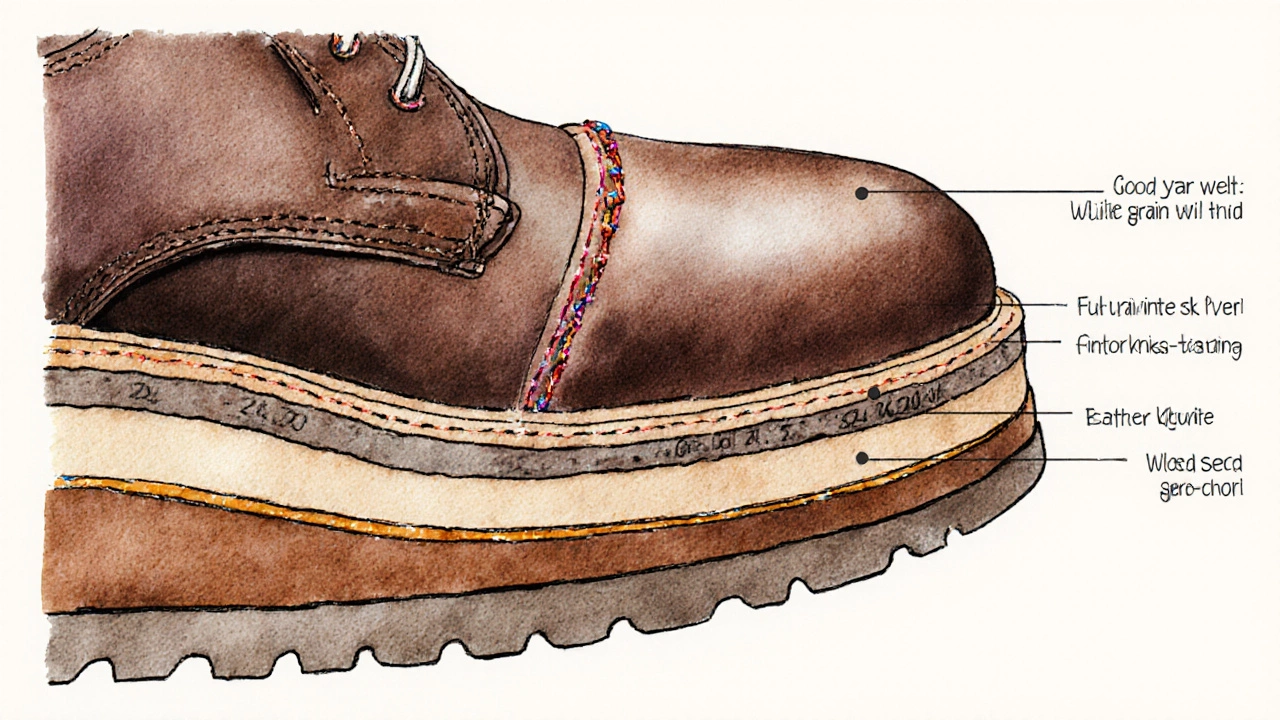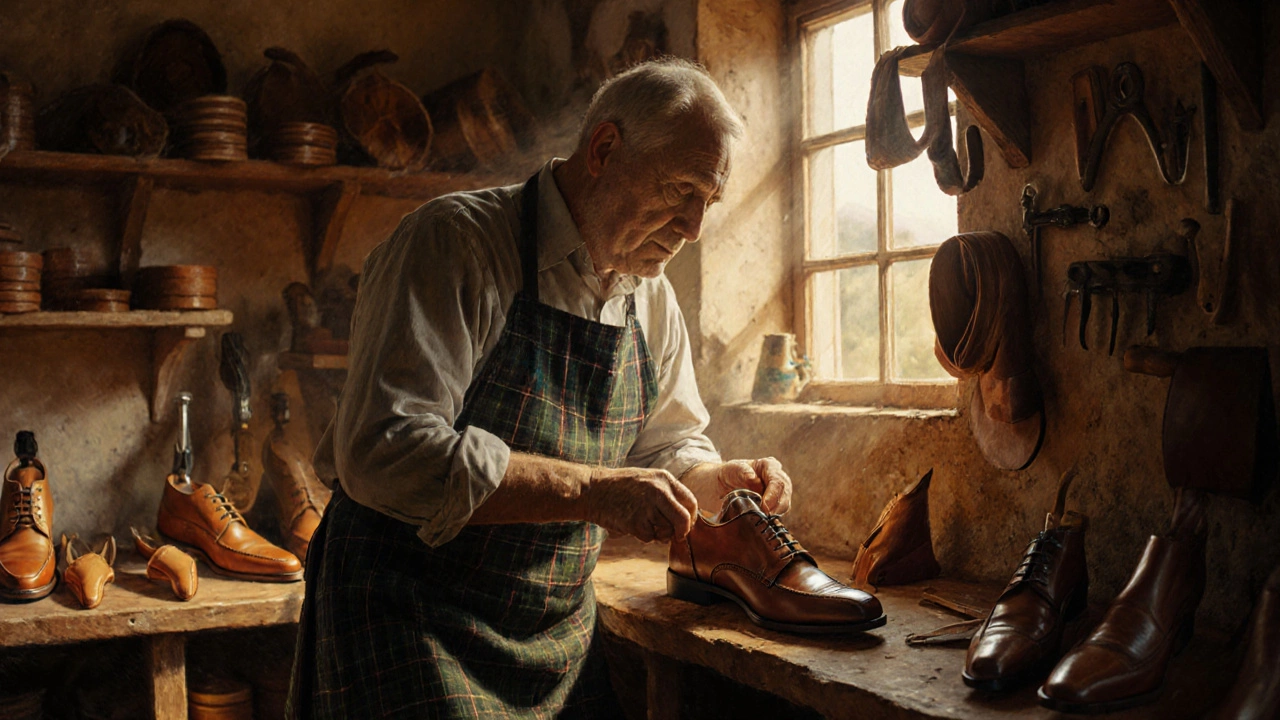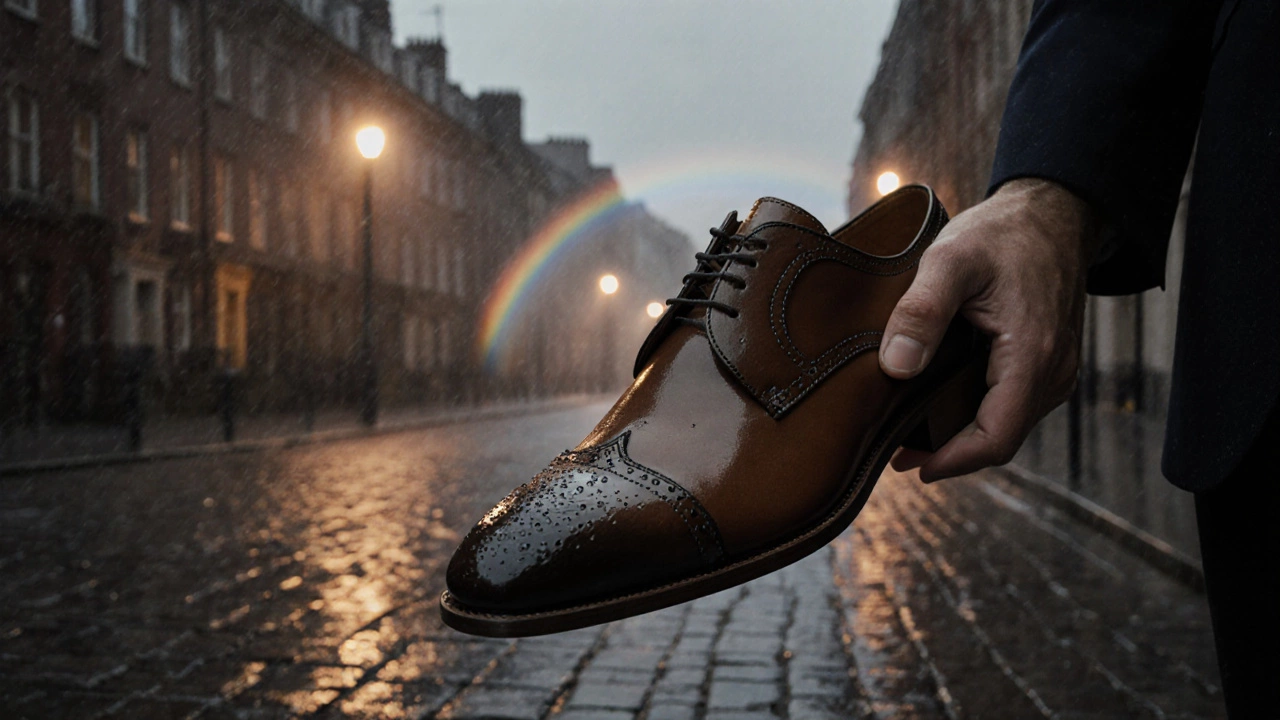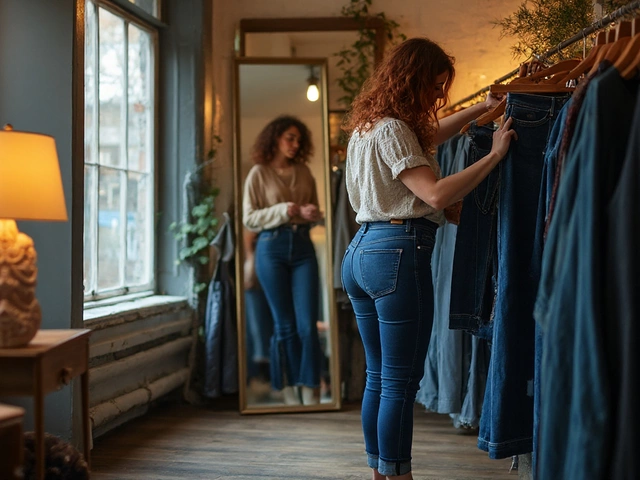Quick Takeaways
- Look for full‑grain leather and natural grain patterns.
- A Goodyear welt or stitch‑down construction signals durability.
- Check stitching: even, tight, and matching the colour of the leather.
- Inspect the sole - leather or thick rubber with a solid bond.
- Test for smell and flexibility; quality leather should feel supple, not stiff.
- Protect the shoes with a proper leather conditioner, especially for Ireland’s damp weather.
When shopping for leather shoes are footwear crafted from animal hide, typically cowhide, that has been tanned and finished for wearability, the market in Ireland offers everything from budget‑friendly knock‑offs to hand‑stitched masterpieces. If you want to know whether a pair is high‑quality leather shoes, follow these steps and keep the Irish climate in mind.
Why Irish Weather Makes Quality Matter
Rain is a constant companion from Galway’s Atlantic breezes to Dublin’s city drizzle. Moisture can quickly break down cheap adhesives and cause leather to stiffen or crack. Quality footwear resists water penetration, dries evenly, and ages into a richer patina rather than deteriorating. That’s why the Irish shopper-whether a commuter, a farmer, or a tourist exploring the Wild Atlantic Way-should prioritize construction and material over price alone.
Understanding Leather Grades
Not all leather is created equal. The most reputable grade is Full‑grain leather the highest‑quality hide layer, retaining the natural grain and strongest fibers. It breathes, develops a beautiful patina, and holds up to repeated polishing.
Next comes top‑grain leather, which has the surface sanding removed to hide imperfections. While still decent, it sacrifices some durability. Split leather-essentially the inner layers-should be avoided for shoes meant to last more than a season, especially in wet conditions.
Construction Techniques That Speak Quality
Goodyear welt a stitching method where a strip of leather or synthetic material is sewn around the upper and attached to the sole, creating a robust, replaceable bond is the gold standard. It allows the sole to be resoled, extending the shoe’s life well beyond ten years. Look for a visible welt line, often a thin strip of leather between the upper and sole.
Other methods include Blake stitching-single‑needle stitching that is quicker but less durable-and cemented (direct‑glue) construction, which can fail when exposed to Ireland’s frequent rain. If you spot a shoe with a glued sole that shows any soft spots, it’s likely a budget model.
Inspect the stitching the thread work that holds the upper together; high‑quality shoes feature tight, even stitches that match the leather’s colour. Uneven or loose threads are a red flag.

Sole Materials and Their Role
A durable sole can be leather, thick rubber, or a combination. Leather soles, paired with a Goodyear welt, are traditional and develop a comfortable break‑in curve. Rubber soles provide extra grip on wet cobblestones in Belfast or the slate paths of Kilkenny.
Check the bond between upper and sole. Press gently near the toe and heel; a solid connection will not flex independently. If the sole lifts or feels spongy, the shoe is likely low‑quality.
How to Test a Pair in the Store
- Look and Feel: Run your fingers over the leather. Full‑grain will feel soft yet slightly textured. Synthetic leather feels plastic and lacks the natural grain.
- Smell Test: Quality leather has a rich, earthy scent. A chemical or sour odor indicates cheap, treated hide.
- Flex Test: Bend the shoe at the toe. It should flex smoothly without creasing the leather excessively.
- Water Test: Drop a few drops of water on the upper. Good leather will bead and roll off, while lower‑grade leather absorbs quickly.
- Weight Check: Heavier shoes often mean solid construction and thicker leather; overly light pairs may lack durability.
Many Irish cobblers, such as McCarthy’s Shoe Repair a family‑run workshop in Galway known for restoring heritage footwear, offer quick in‑store assessments. Even if you’re buying from a department store like Arnotts in Dublin, ask the sales associate about the construction method.
Care and Maintenance for Irish Conditions
Even the best shoes need proper care to survive the damp climate. A leather conditioner a cream or oil that restores moisture and protects against water ingress should be applied after each rainy season. Use a soft cloth, work the conditioner in circular motions, and let the shoes dry naturally-away from direct heat.
Polish adds a protective layer and enhances the patina. For deep cleaning, a mild saddle soap works well, but avoid excessive water. Store shoes on breathable shoe trees to maintain shape and allow any trapped moisture to evaporate.

Quick Reference: Quality Indicators vs. Low‑Quality Signs
| Aspect | High‑Quality Indicator | Typical Low‑Quality Sign |
|---|---|---|
| Leather Grade | Full‑grain, natural grain | Split or bonded leather |
| Construction | Goodyear welt or stitch‑down | Cemented/glued sole |
| Stitching | Even, tight, colour‑matched | Loose, uneven, contrasting thread |
| Sole Material | Thick leather or high‑density rubber | Thin PVC or rubber that peels |
| Water Resistance | Beads on surface, quick dry | Absorbs, darkens when wet |
| Finish | Natural leather scent, subtle shine | Plastic smell, overly glossy |
Where to Find Trusted Irish Retailers
Several boutiques specialise in genuine leather footwear:
- Cailín Shoes - a Dublin shop curating European artisan brands, many featuring Goodyear welt.
- Claddagh Leather - based in Cork, they hand‑craft full‑grain leather shoes locally.
- Grafton Street Leather - offers a range of reputable brands and on‑site repair services.
When buying online, check the retailer’s Irish return policy and look for detailed product descriptions that mention leather grade and construction method.
Common Pitfalls and How to Avoid Them
Even seasoned shoppers can be fooled by marketing jargon. Phrases like “genuine leather” often hide split leather. Always ask for specifics: “Is this full‑grain? What type of stitching?” If a shoe’s price seems too good to be true, it probably is. Remember that a modest price increase for a Goodyear‑welted pair pays off in years of wear, especially when you’re navigating wet cobblestones in Galway’s Latin Quarter.
Frequently Asked Questions
How can I tell if a shoe is full‑grain leather?
Run your hand over the surface; natural grain will feel slightly textured and the pores will be visible. Full‑grain leather also develops a richer patina over time, whereas lower grades stay unchanged.
What is the benefit of a Goodyear welt for Irish weather?
The welt creates a water‑resistant barrier between the upper and sole, and it allows the sole to be replaced when it wears out, extending the shoe’s life despite frequent rain.
Can I fix a glued sole myself?
Minor glue failures can be patched with a strong shoe‑specific adhesive, but a persistent problem usually means the shoe needs a professional resoling or a better‑built pair.
How often should I condition my leather shoes?
Apply conditioner after each rainy season, or at least twice a year, to keep the leather supple and resistant to water.
Do Irish cobblers offer warranties on quality shoes?
Many reputable cobblers, such as McCarthy’s in Galway, provide a one‑year repair guarantee on their own repairs and often on the shoes they sell.


